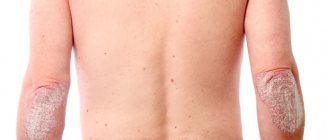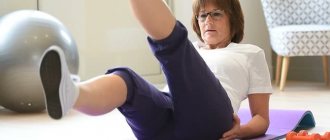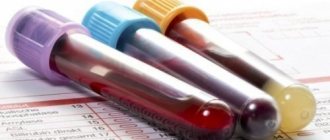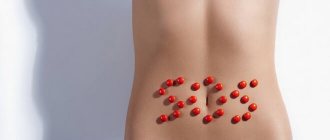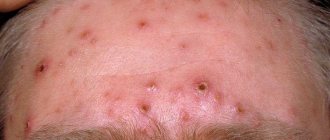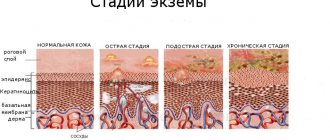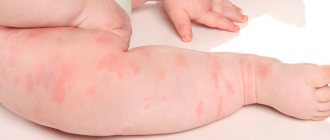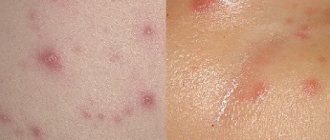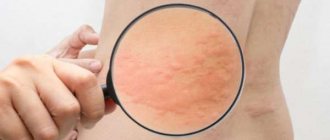What is the disease? general information
Skin diseases can hardly be considered rare.
And neurodermatitis in a child is an extremely common problem. In medicine, this disease is often referred to as “atopic dermatitis.” The disease is an inflammatory lesion of the skin tissue, which is accompanied by redness and itching. Why does this skin disease develop in children? Dermatitis (neurodermatitis) is of autoimmune origin and is associated with the reaction of the immune system to certain irritants. It is worth noting that children are more prone to this disease. According to statistics, neurodermatitis accounts for about 40% of all inflammatory skin diseases.
Unfortunately, this disease is chronic in nature - periods of exacerbation are replaced by more or less long periods of relative well-being. However, with modern treatment methods and the right diet, stable remission can be achieved.
Physiotherapeutic activities
Quite often in modern medicine they are faced with such a problem as neurodermatitis (atopic dermatitis) in children. Drug treatment certainly helps. However, sometimes some additional procedures are necessary for complete recovery.
Magnetic therapy, selective phototherapy, and treatment with diadynamic currents are effective. Quite often, the affected areas of the skin are irradiated with an individually selected dose of ultraviolet radiation. Reflexotherapy and thalassotherapy are also recommended, which have a positive effect on the functioning of the entire body, including the nervous system.
Sanatorium-resort treatment is what doctors recommend if a similar disease has been diagnosed in children. Dermatitis (including neurodermatitis) responds well to treatment with sulfide, hydrogen sulfide and radon baths.
What is neurodermatitis?
Neurodermatitis is a disease with an immunoallergic nature. This means that the child’s body’s immunity cannot fully cope with the allergen and, with the help of symptoms, tries to send a signal to parents that it is worth reducing the load on it and preventing all possible contacts with irritating substances.
Neurodermatitis has only a chronic form. It occurs in several phases, the period of remission can last from several weeks to one or two years. But as soon as contact with the allergen occurs, the exacerbation stage begins, which is accompanied by a pronounced symptomatic picture.
This disease is not contagious. It is not transmitted by airborne droplets, close contact, or sharing household items. There are many reasons why dermatitis develops. And based on the initial cause and course of the disease itself, neurodermatitis is divided into:
- diffuse;
- limited;
- hypertrophic;
- linear;
- follicular;
- psoriasiform.
The diffuse form is accompanied by damage to individual parts of the body - neck, face, lower and upper extremities in the elbow and knee areas.
Limited neurodermatitis is characterized by damage to small areas of the body of the face (mainly the cheeks), neck, chest, back, arms and legs. And the hypertrophic form of the disease is accompanied by damage only to the groin area. Red itchy spots appear on it, which eventually form a crust.
Linear neurodermatitis is characterized by damage only to the lower and upper extremities. The follicular form is characterized by damage to those areas of the skin where there is hair, and psoriasis dermatitis covers only the face and scalp.
Despite the fact that there are many forms of neurodermatitis, it is also classified into atopic dermatitis and urticaria. In the first case, the disease is hereditary in nature and occurs in a particularly severe form, and in the second case, the disease can arise as a result of improper and untimely treatment of neurodermatitis in the initial stages of its development.
In any case, all types of neurodermatitis require a special approach to treatment. Therefore, you should not try to determine its form on your own and try to cope with this disease on your own. Because neurodermatitis is an allergic reaction of the body. And if treated incorrectly, it can intensify, which will lead to a deterioration in the child’s well-being.
What is rheumatoid arthritis
, and how is it treated in children?
How to treat a dry cough in a child? Read in this article.
Neurodermatitis in a child is an inadequate reaction of the skin to external stimuli. The occurrence of the disease is associated with a disruption in the functioning of the immune system. Often the pathology is accompanied by other diseases: asthma, dermatitis, eczema.
According to medical statistics, neurodermatitis is diagnosed in half the cases of the total number of skin ailments in infants. Doctors note that the frequency of detection of pathology increases every year. The disease most often occurs in young patients who live in areas with unfavorable environmental conditions.
What does neurodermatitis look like and where is it located?
With regard to the location of the rash and its concentration, the disease can be divided into limited and diffuse neurodermatitis.
Limited neurodermatitis usually occurs in adults. It is characterized by several foci of rash (most often no more than two) with pronounced redness along the edges. The rash is located mainly on the face, elbows or knees, neck or back of the head. This type of neurodermatitis is observed only in one place. Let's look at the limited neurodermatitis photo:
Diffuse neurodermatitis can manifest itself at different ages. It manifests itself in a large volume of rash, usually located equidistantly. The lesions can be located on the face, chest, in the bends of the elbows and knees, on the inside of the thigh and are ashen in color, and, if scratched, become dense formations covered with a crust. Diffuse neurodermatitis photo:
Modern medicine understands neurodermatitis as an allergic chronic disease associated with inflammation of the skin, manifested as a stripless rash. The disease is seasonal, often with relapses, and is very common among children. Sometimes during puberty - the period of puberty - neurodermatitis goes away forever. Let's take a closer look at neurodermatitis, symptoms and treatment, photos.
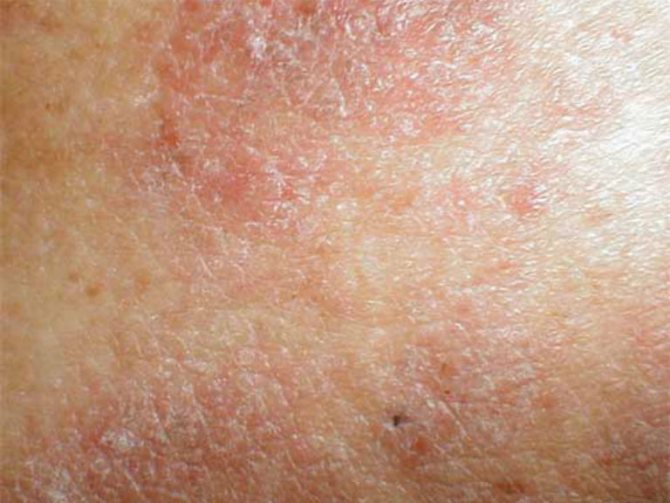
Limited neurodermatitis usually occurs in adults. It is characterized by several foci of rash (most often no more than two) with pronounced redness along the edges. The rash is located mainly on the face, elbows or knees, neck or back of the head. This type of neurodermatitis is observed only in one place. Let's look at the limited neurodermatitis photo:
The main reasons for the development of the disease
Cheilitis is a benign inflammatory disease that develops on the lips. The pathological condition has pronounced signs, which makes it possible to detect it in a timely manner.
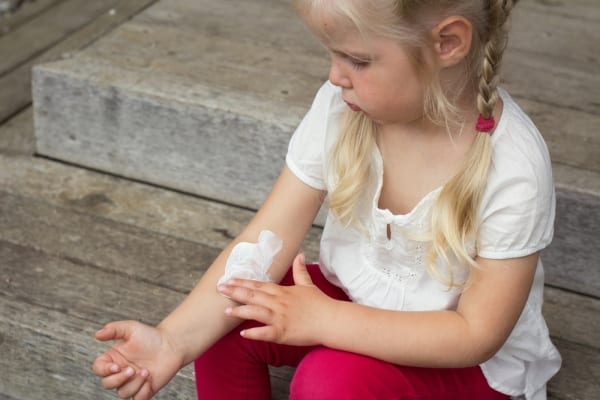
A decrease in the defenses of the immune system, a stressful situation, as well as the presence of a hereditary predisposition and mental disorders can cause lip disease.
If the form of the disease is dry, then white crusts appear on the edges of the lips, which are easily removed by hand. Lips often become red and flaky.
The exudative form of the disease is accompanied by redness, burning and swelling of the lips. Most patients complain of pain. The crusts in this form of the disease are gray-yellow in color.
Treatment of the disease should be carried out with the use of sedatives. It is recommended to use interference agents to lubricate the lips. To remove crusts - boric acid. Most patients are prescribed drugs to increase the body's reactivity, for example, Pyrogenal.
This form of the disease is observed with excessive sensitivity to ultraviolet radiation. If a person spends a long time in the sun, this leads to an exacerbation of the disease. Symptoms are pronounced:
- When this pathological condition occurs, the patient feels dry lips. Their surface turns red.
- Scales and cracks appear on the lips.
- If treatment of the disease is not carried out in a timely manner, this leads to the appearance of erosions that do not heal for a long time.
- Some patients were diagnosed with the appearance of ulcers and hardened areas.
- If the disease is chronic, it can lead to a precancerous condition.
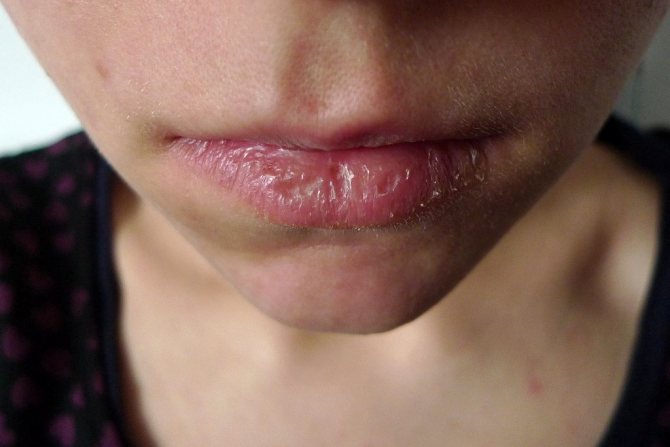
To eliminate cheilitis, it is imperative to use photoprotective creams when going outside. Patients are also prescribed corticosteroid ointments. Prednisolone ointment and Flucinar are quite effective in this case.
To slow down the pathological process, it is necessary to take vitamins and nicotinic acid. If necessary, it is recommended to use antimalarial drugs, for example, Delagil.
Atopic cheilitis is a symptom of diseases such as neurodermatitis and atopic dermatitis. It occurs when the human body is exposed to a variety of allergens - plant pollen, household dust, medications, food products, bacteria and microorganisms.
With atopic cheilitis, the border of the lips acquires a bright red tint, dryness and flaking of the skin is observed. Most patients are diagnosed with cracks. Some patients complain of a burning and itching sensation, which may be accompanied by pain.
To eliminate the disease, it is mandatory to prescribe anti-allergy medications. Usually:
- Claritina
- Suprastina
- Fencalora.
To strengthen the immune system, it is recommended to take vitamins that belong to group B. If the disease lasts for a long period, then it is necessary to take corticosteroid ointments. It is recommended to apply them to rashes 4 to 6 times a day.
In some cases, patients are prescribed borderline Bucca rays, which are characterized by a high level of effectiveness.
The causes of neurodermatitis are not fully understood. It is precisely established that the disease is caused by an allergic nature. Moreover, an allergic reaction can be provoked by various irritants or a combination of them.
Neurodermatitis is associated with reactions of the immune system - for one reason or another, the child’s body reacts inadequately to contact with certain substances. Allergens are most often food, although sometimes allergic reactions are associated with the use of cosmetics, contact with household chemicals, and wearing synthetic materials.
The causes of neurodermatitis in children can be different. To begin with, it is worth mentioning the genetic predisposition that occurs with this disease. There are other risk factors that can trigger the development of the disease. Their list includes:
- constant stress, increased psycho-emotional stress;
- various disorders in the digestive system;
- mental disorders, disorders of the nervous system;
- inflammatory diseases, regardless of origin and location (including those ailments that occur hidden);
- intoxication of the body;
- helminthic infestations;
- unfavorable living conditions (from an environmental point of view);
- If we are talking about neurodermatitis in newborns, then its development may be associated with improper nutrition of a woman during pregnancy and lactation.
Causes of neurodermatitis
Since the tendency to allergic reactions is often hereditary, patients with a similar diagnosis are also diagnosed with other allergic diseases, such as bronchial asthma, urticaria, hay fever, and allergic rhinitis.
In addition to hereditary predisposition, modern allergists point to several other causes of neurodermatitis. Let's list some of them:
- disturbances in the functioning of the body's endocrine system;
- nervous system disorders;
- depression or stress;
- eating foods that can cause allergies;
- various intoxications of the body, including infectious ones.
When neurodermatitis occurs, it is difficult to immediately identify the factor that caused the disease. After all, the allergen may be pollen from a plant, the hair of a pet, pillow filling, and so on. But, as mentioned above, the disease, in addition to allergic, also has a psycho-emotional origin. Therefore, the cause of sudden skin rashes may be depression, chronic fatigue syndrome or mental trauma.
Types, classification and symptoms of neurodermatitis in children
Neurodermatitis in children is divided into the following types:
- Limited. With it, the rash always forms on the same area of the skin. The spots have clear boundaries, the size of the rashes is small. This form is most often found on the skin in the area of the collarbones, arms, back, and knees. In rare cases, the lesion affects the face, abdomen, neck, and feet.
- Diffuse. It is characterized by a large amount of rash. The spots are located close to each other and tend to merge, which leads to damage to large areas of cover. Most often, the rash occurs on the face, neck, chest, abdomen and back, but never affects the palms and soles of the feet. This form of neurodermatitis occurs in most cases.
- Atopic. With this type of pathology, spots appear in different parts of the body or in one area, which depends on the nature of the pathogen. Any part of the body can be affected, with the exception of the palms and feet.
These types of neurodermatitis in children occur in a chronic form (remissions are replaced by exacerbations). The frequency of acute periods depends on how severe the disease is. Therefore, treatment of pathology is primarily aimed at preventing exacerbation.
Neurodermatitis can be congenital (inherited) or acquired (occurs in children due to exposure to an irritant). Depending on where it is localized and what area of the skin a child’s neurodermatitis occupies, the pathology is classified into the following forms:
- Limited neurodermatitis - itchy rashes occupy separate areas of the skin. In children, inflamed areas are diagnosed in the area of the wrist joints and bends of the limbs. The boundaries of pathological foci are well defined. They are located symmetrically, have an oval shape, and are pink-brown in color.
- Diffuse (scattered) - lesions are simultaneously localized on the face, torso, and limbs. The diffuse form of neurodermatitis in children worsens in winter, and in the warm season the symptoms of the disease almost disappear.
- Linear (linear) - inflamed areas in the form of lines appear on the upper and lower extremities in the fold areas, with a papular rash and peeling.
- Follicular - those areas of the skin on which there are hairs become inflamed. The disease manifests itself as pointed papules (dense, sharp nodules).
- Hypertrophic - this form of skin disease in children is rare. Changes affect the skin of the inner thighs and inguinal folds. The pathology is manifested by thickening of the epidermis with the formation of folds and infiltrates (pustules) around the hairs. Characterized by paroxysmal severe itching. It often occurs at night and disrupts sleep patterns.
- Psoriasiform - manifests itself as red, compacted areas with silver-gray scales on the surface. Psoriasis-like lesions most often affect the skin of the neck or face.
- Decalvating - pathology affects areas of the head with hair, which provokes hair loss. After prolonged decalvating folliculitis, flat scars remain on the skin.
Types of neurodermatitis
There are several types of neurodermatitis:
- Diffuse. This type appears on the neck, face, as well as elbow joints and popliteal cavities. The most common type is neurodermatitis, which affects the hands.
- Limited. It is localized only in certain areas of the skin.
- The hypertrophic type of the disease manifests itself in the groin area in a tumor-like form.
- Linear - localized in the form of itchy stripes in the bends of the limbs.
- Psoriasiform is localized on the head and neck. In this case, red, compacted lesions appear, which are covered with flaky small scales.
- Follicular. With it, pointed papules appear on the hair areas.
- The decalving appearance appears on the hairy areas and provokes hair loss.
Diagnosing neurodermatitis in infants is quite easy. For this purpose, anamnesis is collected and immunological and biochemical studies are performed. In children with this disease, the level of E-immunoglobulin increases.
Possible complications and prognosis
The prognosis for neurodermatitis depends on how old the patient is, how severe the disease is, and whether treatment measures are effective. If the pathology occurs in a baby, then treatment is easier and the outcome of the disease is favorable. But with age, the disease becomes more severe and can develop into a chronic form. In this case, you will have to deal with exacerbations of neurodermatitis throughout your life.
Patients often experience inflammatory skin pathologies, which appear as a result of infection entering the scratched wounds at the site of the rash. Due to the development of an infectious lesion, skin cells atrophy. To prevent such phenomena, it is necessary to promptly treat neurodermatitis in infants and older children.
The prognosis of the disease greatly depends on the age at which the disease was detected and how effective the treatment measures were.
Neurodermatitis in early childhood, which occurs due to the immaturity of the child’s body, is treated quite easily - it is necessary to provide the baby with proper nutrition, later introduction of complementary foods, and hypoallergenic living conditions. Treatment with systemic drugs is extremely rarely required. With age, the child’s immune system matures and stops responding to the allergen.
If the disease manifests itself at a later age or does not receive sufficient treatment, then it is likely to become chronic, and treatment measures will have to be taken throughout life.
Among the most common complications of neurodermatitis, inflammatory skin diseases should be mentioned - scratching contributes to the introduction of bacterial and fungal infections into the affected area, and skin affected by neurodermatitis is an excellent entry point for infection. Skin atrophy over a long period of time can take quite severe forms.
If neurodermatitis in an infant is severe, then due to weakened immunity, a secondary infection may join this disease:
- Staphylococcal or bacterial - blisters of different sizes appear on the skin of children with a clear serous fluid, which becomes cloudy after a while. Purulent blisters burst, and in their place superficial erosions and crusts appear. The child may have a fever. In the absence of adequate treatment, chronic recurrent furunculosis may form against the background of neurodermatitis.
- Herpes simplex virus - infectious agents either already live in the body and are activated due to weakened immunity, or the child becomes infected with them from loved ones. Neurodermatitis complicated by the herpes simplex virus is manifested by an increase in temperature up to 40°C, intoxication of the body, nausea, and muscle cramps.
To avoid complications, children must be taken to see a pediatrician in a timely manner and follow all recommendations given to them.
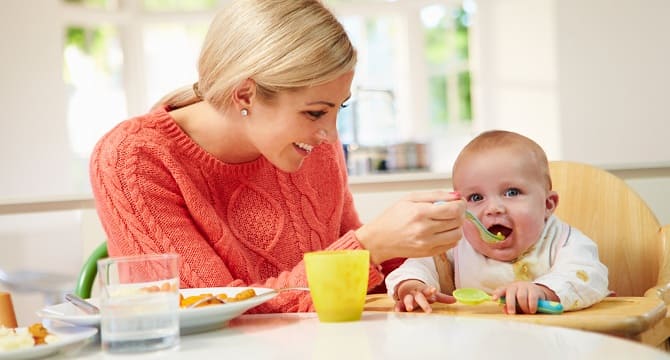
Self-diagnosis and self-medication can lead to disability.
Statistics show that neurodermatitis in children can be successfully treated in most cases. However, in some cases the disease leads to the development of certain complications.
To begin with, it is worth saying that constant itching affects the emotional state of the child. He becomes restless, sleeps poorly, and loses his appetite. Older children are nervous and irritable. The development of an asthenic state is possible.
Constant scratching causes scratches and ulcers to appear on the affected areas of the skin. Sometimes neurodermatitis can be complicated by bacterial and fungal infections, which are sometimes difficult to treat.
Symptoms of atopic dermatitis in newborns
The symptoms of the pathology directly depend on the stage of the disease. At the initial stage, parents may notice separately reddened areas of the skin. Most often, with contact forms, they appear in places where the skin is in constant contact with clothing.
In the diffuse form of the disease, red spots actively spread throughout the body. They are noticeable on the cheeks, neck, under the knees, in the elbow pits.
When an exacerbation of the disease occurs, the symptoms become severe:
- the child looks sick;
- the itching increases intensely;
- the child actively combs the damaged areas;
- some areas may already be covered with transparent bubbles with liquid inside;
- the skin becomes red and the body temperature rises.
- The child is lethargic and capricious. Some relief may occur at night.
When the pathology goes into remission, the wet areas become covered with dense crusts. With a long course of the disease, some areas of the skin are thinner, others are noticeably thicker. The skin in the affected areas becomes excessively dry and constantly peels off. Additionally, it should be moisturized with creams and ointments.
Diet for neurodermatitis in children
There is one more point that is worth paying attention to. The nutrition of children with neurodermatitis is an extremely important factor, because in most cases the reaction of the immune system is associated with sensitivity specifically to food. First, you need to eliminate potential allergens from your diet. In most cases, this is cow's milk (or infant formula containing casein), eggs (especially yolks), and red fruits.
A child with neurodermatitis is advised to give up sweets. Sudden changes in blood glucose levels negatively affect the functioning of the nervous system, and increased arousal, in turn, can only aggravate the situation. Moreover, candies and other sweets, as a rule, contain a huge amount of dyes and flavors, which can also provoke an allergic reaction.
Traditional methods for the treatment of neurodermatitis
Traditional medicine for skin diseases can be performed after a doctor's permission. How to treat neurodermatitis at home? For external use, experts recommend making ointments . According to the first recipe, the ointment is made from propolis and petroleum jelly (10:1). First, Vaseline is liquefied on the stove until it boils, then mixed with propolis and allowed to cool. The composition is rubbed into infected areas.
The composition with natural fat is made as follows:
- 500 gr. lard is melted in a frying pan, drained and poured into a porcelain container;
- add 250 grams of pure sulfur to warm fat;
- the skin is treated with baby soap, and then this composition is applied.
For neurodermatitis, the liquid for compresses is made from oak bark. It is taken in an amount of five parts and mixed with coriander, nettle, wormwood, birch leaves, flax seeds, mint. The collection is allowed to brew in boiling water for one day. Then moisten the gauze and make a compress.
How to treat neurodermatitis
Treatment of neurodermatitis in children involves an integrated approach, which includes:
- use of local and systemic medications;
- physiotherapeutic procedures;
- dietary food.
The doctor forms a treatment regimen taking into account the severity of the disease, the presence of concomitant pathologies, the reasons that provoked neurodermatitis, the age, and the general condition of the child.
Tablets and ointments
To relieve symptoms of skin diseases in children, several groups of drugs are used:
- Antihistamines in the form of syrup (Cetirizine, Chloropyramine) - relieve itching, swelling, and calm the nervous system.
- Hepatoprotectors (Flamin suspension, Essentiale in capsules) - necessary for liver function and improvement of metabolic processes in the body.
- Soothing herbal preparations (infusion of valerian, motherwort) - normalize the mental state, eliminate irritability, apathy, and insomnia.
- Probiotics (Bifidumbacterin solution, Hilak Forte drops, Linex) - improve the intestinal microflora, improve the functioning of the digestive tract. Alleviate symptoms.
- B vitamins, vitamins A, E are prescribed for the purpose of a speedy recovery, strengthening the immune system, and increasing the body’s resistance to irritants.
- Local medications - depending on the age and severity of neurodermatitis, children are prescribed ointments on a hormonal (Hydrocortisone 1%, Advantan, Elokom) or non-hormonal basis (Eplan, Skin-Cap, Bepanten). The action of external agents is aimed at eliminating itching, flaking, removing swelling and redness, and regenerating the skin. Hormonal ointments have a faster effect, but have many contraindications and side effects.
Diet
Children and nursing mothers with any skin diseases are prescribed a hypoallergenic diet. Therapeutic nutrition consists of fermented milk products, fresh fruits, vegetables, dietary meat, low-fat fish, compotes, and juices. All products that can cause allergies are excluded from the menu. Their list includes honey, cocoa, chocolate, citrus fruits, and chicken eggs. Remove foods that negatively affect the functioning of the digestive tract - fried, salty, sweet, fatty foods.
Rules of care
To quickly achieve a therapeutic effect, parents of a baby with neurodermatitis need to do everything to improve his quality of life:
- When bathing, add 1 tbsp to the bath. l. oils - water dries the skin, and vegetable oil is necessary to prevent dryness.
- The child should not wear tight clothes, especially synthetic ones, as they do not allow the skin to breathe and cause diaper rash.
- The folds of an infant's skin should be wiped daily with sage or chamomile infusion and treated with Bepanten cream.
In case of skin diseases, it is very important to form the correct daily routine for the child, which will have a positive effect on his nervous system.
Night sleep should last at least 8 hours. The routine should also include additional hours of sleep during the day.
As an additional treatment for neurodermatitis, you can use traditional medicine recipes.
Principles of treatment
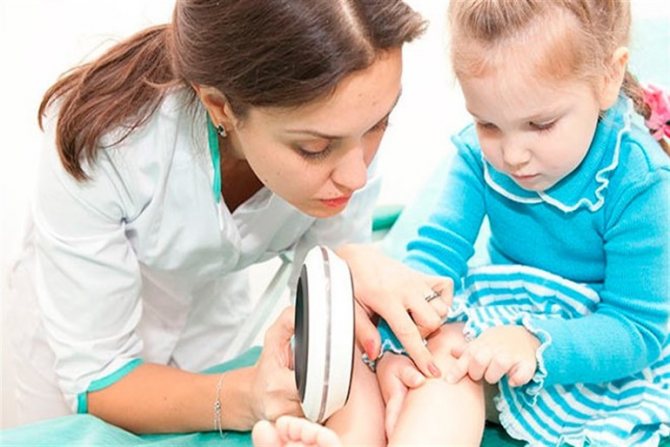
Treatment of neurodermatitis in children has two main goals: to eliminate existing functional disorders and to reduce the frequency and duration of exacerbations. Complex therapy is based not only on the use of various medications, but also on improving sanitary and living conditions. Before choosing a particular therapeutic strategy, regardless of whether it involves taking potent drugs or is based solely on unconventional methods, you should definitely consult a doctor .
Using Local Remedies
Local treatment of neurodermatitis in children, the symptoms of which can easily be confused with allergic diathesis, involves the use of all kinds of ointments, gels, emulsions, and mash. For weeping areas, it is advisable to use drying preparations, for example, zinc ointment. To soften the skin, Gistan cosmetic cream is suitable.
Ointments based on birch tar, ichthyol, and sulfur are designed to quickly remove inflammation. You can reduce itching with Glutamol and Elidel. The preparations Bepanten and Panthenol have excellent regenerating properties that allow healing and restoring the delicate skin of a child. If the disease has acquired an extremely advanced form, you cannot do without the use of ointments containing hormones.
Oral medication
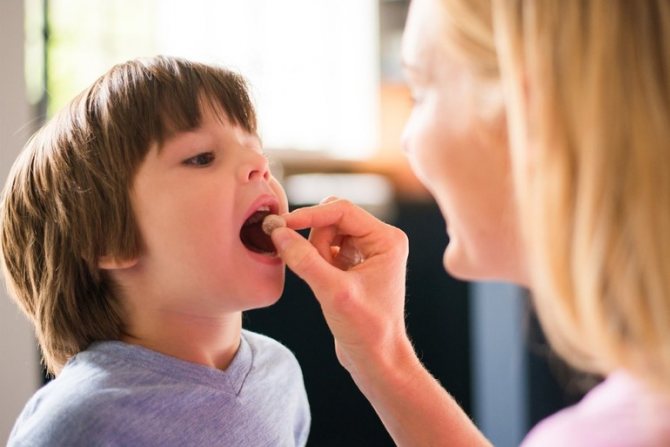
To relieve the child from painful itching and stop inflammation, new generation antihistamines (Levocetirizine, Claritin, Fexofenadine), which are famous for the minimal number of side effects, are used.
In advanced cases, with a large area of damage and complications in the form of an acute allergic reaction, glucocorticosteroids (Prednisolone, Dexamethasone, Hydrocortisone) are prescribed with caution. To avoid unwanted side effects, they should be used in short courses. Treatment of dermatological pathology complicated by a secondary infection is carried out in parallel with the use of antibacterial or antifungal agents.
During periods of exacerbation, doctors recommend using enterosorbents to help remove toxins from the body. It would be useful to take medications that support the microflora of the gastrointestinal tract.
Physiotherapeutic activities
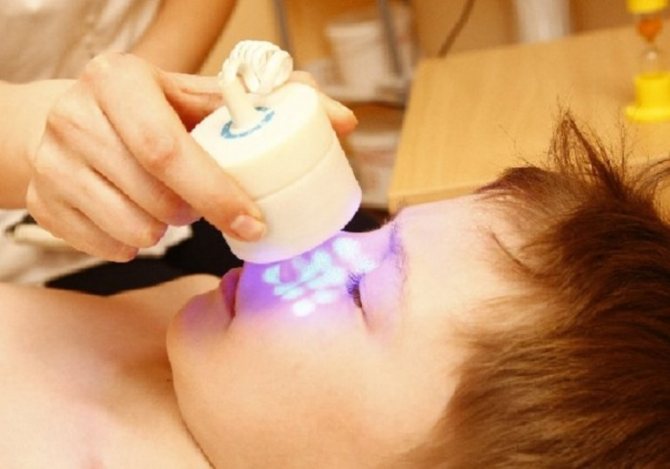
The most important component of complex therapy for chronic neurodermatitis in children is physiotherapy. Inflamed areas of the skin are exposed to magnets, oxygen, ozone, electric current, heat, and ultraviolet radiation. Phonophoresis and injection of localized neurodermatitis with corticosteroids have a good effect. Reflexology and thalassotherapy also have potential benefits for the entire body, including the central and autonomic nervous systems.
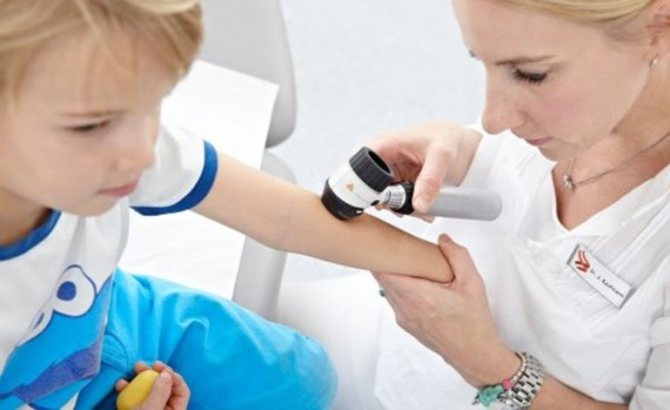
Each method has its own indications and contraindications. To achieve a visible effect, a minimum of 15-20 sessions are required. Sanatorium-resort treatment on the southern seas has a positive effect on the overall course of the disease, prolonging remission for a long time.
Traditional medicine recipes
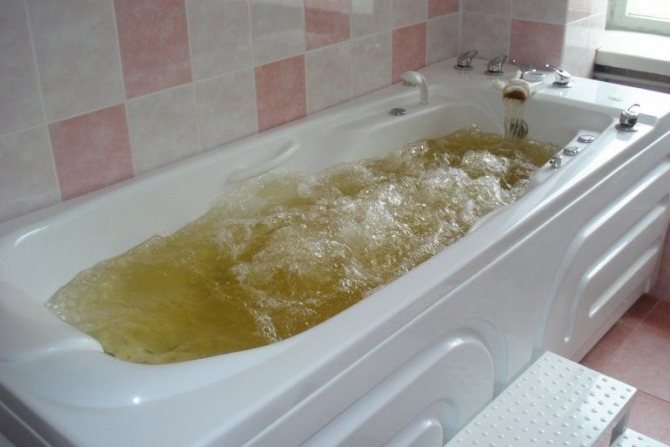
A good addition to the main treatment can be the use of recipes from traditional healers. Lotions or water treatments with decoctions of medicinal herbs will help speed up the process of skin restoration, reduce itching and relieve irritation. For these purposes, chamomile, string, celandine, oak bark, and sage are suitable. To prepare a herbal decoction, you need to pour 3 tablespoons of dry raw materials with a glass of water and put on low heat for 10 minutes, then strain and cool. Use the product twice a day.
To soften dry and irritated skin, you can use oatmeal compresses. They need to be poured with boiled milk and left to swell. The resulting mass applied to the affected areas must be covered with a clean gauze cloth on top. The compress is kept on the skin for 15 minutes.
A mask made from crushed mint leaves has an anti-inflammatory effect. The main ingredient must be poured with boiling water. The resulting pasty substance is applied to the areas of inflammation for 20-30 minutes.
Neurodermatitis in children: modern treatment methods
The first and most important thing is to follow a diet, eating only those foods that do not cause an exacerbation of the disease. You should try to avoid all products containing dyes, flavors, and various preservatives. You will also have to limit the consumption of smoked, pickled, fried foods.
- Products that cause an exacerbation of the disease in your child. These can be standard components of the diet - chocolate, brightly colored fruits and vegetables, or something purely individual.
- Foods that often cause allergic reactions in the vast majority of allergenic people. These are milk, honey, nuts, chicken eggs, cocoa, chicken, sea fish.
- You should also exclude products that contain large amounts of initiators of allergic reactions, as they contain histamine and similar substances. These include bananas, tomatoes, seafood, pickled and pickled foods, chocolate, soybeans, spinach, and chicken eggs.
- Foods that irritate the digestive tract - hot spices, mustard, horseradish, radishes, radishes.
- All vegetables and fruits are bright colors - yellow, red, orange.
- All types of cereals.
- Fermented milk products, preferably homemade sourdough.
- Lean meat, except chicken.
- Vegetables and fruits are light green and white.
- Cheese.
- Vegetable oil, preferably refined.
- Diet grain breads.
Unfortunately, just following a diet is not enough to ensure that the disease worsens as little as possible.

Therapy for this form of dermatitis must be comprehensive. The list of medications is determined individually, since much depends on the severity of the disease and the age of the child. In most cases, the treatment regimen includes the following:
- antihistamines that help relieve swelling and slow down the development of an allergic reaction (Claritin, Tavegil, Cimetidine);
- hepatoprotectors that protect liver cells and improve the process of cleansing the body of toxins (“Karsil”, “Essentiale”);
- enzymes that help improve the functioning of the digestive tract (“Mezim”, “Festal”);
- corticosteroids, in most cases in the form of ointments (“Hydrocortisone”);
- immunomodulatory drugs (“Timalin”, “Levamisole”);
- vitamins and mineral complexes (available for children of different ages);
- hyposensitizing drugs (“Hemodez”);
- sedatives that help get rid of increased stimulation of the nervous system (tincture of valerian root or motherwort);
- various ointments for external use, including, for example, tar ointment.
What else can be done if neurodermatitis is diagnosed in children? Folk remedies, of course, exist. Moreover, home remedies can sometimes be a great way to deal with skin rashes and itching.
- It is believed that a decoction of burdock root helps with neurodermatitis. Brew two small spoons of plant material in a glass of boiling water (boil over low heat for about 10 minutes). Then the liquid needs to be cooled and strained. Children take 50 ml of decoction (it is advisable to do this before meals).
- Compresses made from decoctions of horsetail, oak bark and mallow help relieve itching. You can lightly wipe the affected areas of the skin with a cotton swab dipped in the prepared broth. The procedure is repeated about 6 times a day.
- Plants such as chamomile, string and sage have anti-inflammatory properties. You can make compresses from them. In addition, decoctions are added to bathing water.
Of course, compresses and medicinal decoctions are only auxiliary means. Under no circumstances should you refuse drug therapy.
Neurodermatitis must be treated in a comprehensive manner over a long period of time. Therapy involves maintaining personal hygiene, taking medications, attending physical therapy sessions, and proper nutrition. As a supplement, treatment methods with folk remedies are used.
Rules of care
Treatment of neurodermatitis is carried out with mandatory observance of the rules of hygiene of the child and the premises. It is necessary to regularly ventilate the room, carry out wet cleaning, eliminating all irritants that can intensify the course of the pathology.
The child should choose clothes that are spacious and do not restrict the body. Wardrobe items should be made of high-quality materials that do not irritate the skin.
On the recommendation of the treating doctor, the patient is prescribed medications. The selection of medications depends on what caused the disease. Local medications with anti-inflammatory effects are used, which are used to treat the skin several times a day.
Doctors advise using ointments containing sulfur, tar, naphthalan: they promote rapid healing. In addition to external medications, oral medications that have an anti-allergic effect are prescribed. Patients also take medications to stimulate the immune system and multivitamin complexes.
As an adjunct to the treatment of neurodermatitis, patients are recommended to attend physiotherapeutic procedures. The most popular method of physical therapy for skin diseases is phototherapy. This can be irradiation with a simple quartz lamp or selective phototherapy. The latter method is prescribed provided that there is no acute inflammation in the patient’s body.
Doctors advise parents to send their children suffering from neurodermatitis to sanatoriums for treatment. There are all the conditions for successful elimination of pathology. Such institutions provide a full range of necessary physiotherapy procedures.
Young patients definitely need to adjust their diet. The menu should not contain products that can cause an allergic reaction, dyes or preservatives. Patients are prohibited from eating spicy, sour, fatty, smoked foods.
The diet should not include carbonated drinks and juices in packages: they contain substances that enhance the taste and smell of the product, increasing its shelf life. Such components are harmful to health. Children with neurodermatitis are given freshly squeezed juices: apple, carrot.
To enhance the effect of the main methods of treating neurodermatitis, non-traditional medicines are used. They are made from medicinal herbs that have a healing, antipruritic, anti-allergenic effect. Decoctions are made from plants for oral or external use.
For each patient, the collection of medicinal herbs is selected individually. The composition should contain those components that are well tolerated by patients.
For oral administration, you can use the following folk remedy: make a collection from the same amount of valerian, flaxseeds, burdock root, violet and watch leaves, and angelica root. Separate 2 tablespoons of herbs, brew them with 500 ml of boiling water in a thermos, let them brew overnight. Drink a third of a glass three times a day before meals.
For lotions, use the following recipe: mix marshmallow root, oregano, St. John's wort, mint, plantain, chamomile, thyme, string, and juniper in equal proportions. The infusion is made in the same way as the previous remedy, but it is used to treat the affected areas of the skin.
In young children (under 3 years old), manifestations of neurodermatitis may be due to insufficient maturity of the immune system, liver enzymes, and others. Therefore, if you follow the treatment regimen and the appropriate diet, they can disappear without a trace as you grow older.
At an older age, skin rashes are a sign that neurodermatitis will become a chronic disease and will have to be treated throughout your life.
Systemic drugs
Systemic, i.e. prescribed in the form of tablets, and in severe cases - injections, drugs play one of the most important roles in the treatment of neurodermatitis, especially in older children and adolescents. Many of them are allowed to be taken only after three years of age, so they are not prescribed in early childhood.
Main groups of drugs:
- Sedatives (sedatives) are prescribed to reduce itching, combat hyperactivity, as well as insomnia;
- Antihistamines and membrane stabilizers act on various stages of the allergic reaction, reduce the intensity of skin manifestations, including itching, and eliminate the risk of other signs of hypersensitivity;
- Anti-inflammatory drugs based on corticosteroid hormones in tablets are used in severe cases to relieve inflammation on the skin;
- Vitamin complexes, immunomodulators, and restorative drugs are used to improve the patient’s condition.
Local treatment
Preparations for local treatment allow you to act directly on damaged skin without causing adverse reactions, and are also acceptable for use in children under three years of age, which is very important for preventing dangerous forms of the disease.
Various creams, ointments, and solutions are used that have anti-inflammatory, antipruritic, action (ointments with corticosteroids), disinfectant and mild cooling effect (bepanthen).
Bepanten is often used to treat various types of dermatitis. Here you can see a photo of dermatitis on your hands.
Drying agents should not be used - in this case they do more harm than good.
Folk remedies
Since the problem of childhood neurodermatitis has been known for a long time, traditional medicine has invented many ways to alleviate the condition of a small patient. But before using one or another of them, it is advisable to consult with a pediatrician about its admissibility.
In folk medicine, soothing and anti-inflammatory herbs (chamomile, mint, lemon balm, sage) are widely used in the form of compresses and infusions for application to the skin. It should be remembered that only water infusions are suitable for this, but not alcohol tinctures - they can have a negative effect both on the patient’s skin and cause systemic intoxication when absorbed into the blood.
Are folk remedies effective?
What else can be done if neurodermatitis is diagnosed in children? Folk remedies, of course, exist. Moreover, home remedies can sometimes be a great way to deal with skin rashes and itching.
- It is believed that a decoction of burdock root helps with neurodermatitis. Brew two small spoons of plant material in a glass of boiling water (boil over low heat for about 10 minutes). Then the liquid needs to be cooled and strained. Children take 50 ml of decoction (it is advisable to do this before meals).
- Compresses made from decoctions of horsetail, oak bark and mallow help relieve itching. You can lightly wipe the affected areas of the skin with a cotton swab dipped in the prepared broth. The procedure is repeated about 6 times a day.
- Plants such as chamomile, string and sage have anti-inflammatory properties. You can make compresses from them. In addition, decoctions are added to bathing water.
Of course, compresses and medicinal decoctions are only auxiliary means. Under no circumstances should you refuse drug therapy.
